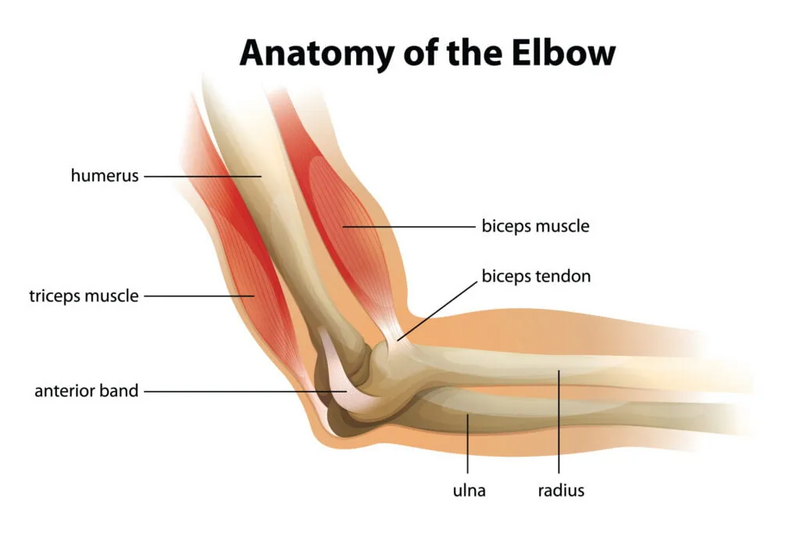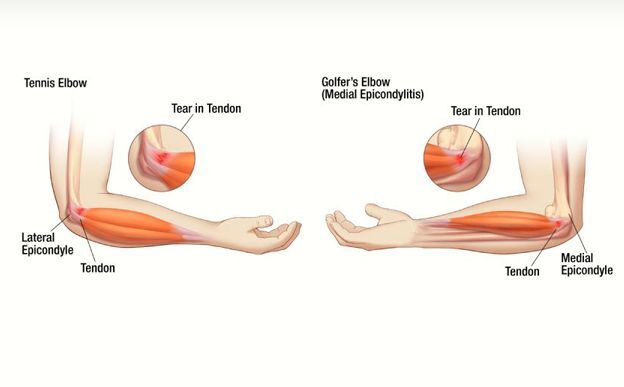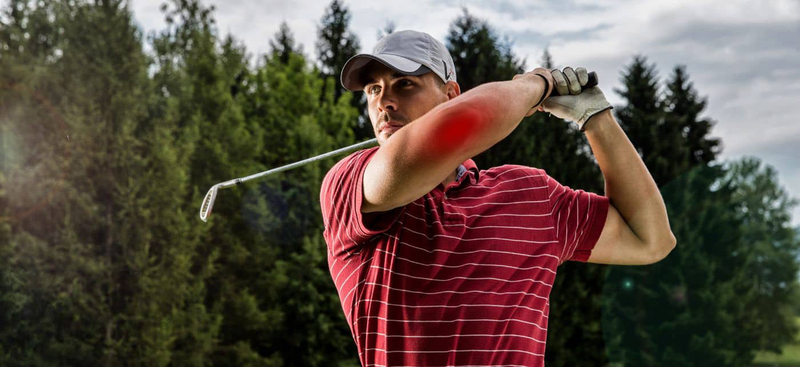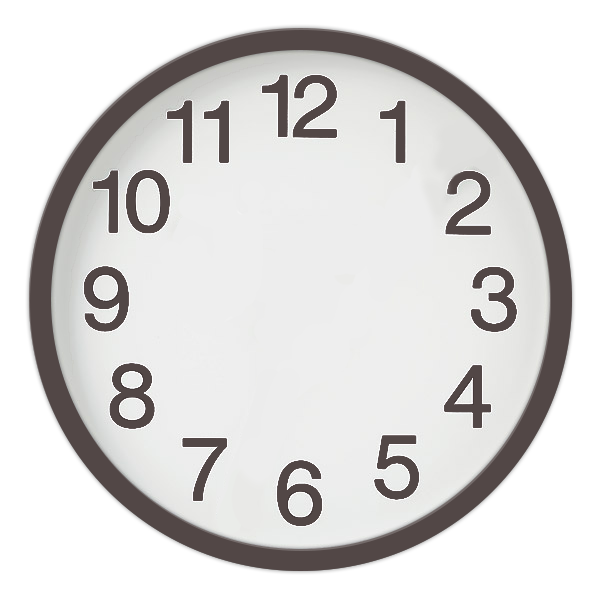Coming Soon...
OKSomething went wrong!
Please try again later.

Golfer’s Elbow, medically known as medial epicondylitis, is a common overuse injury that affects the tendons on the inner side of the elbow. It results from repetitive stress on the forearm muscles, leading to inflammation, pain, and reduced grip strength. While this condition is often associated with golf, it can also affect individuals engaged in activities that require repetitive wrist and arm movements, such as tennis, weightlifting, and even certain occupational tasks.
This article explores the causes, symptoms, and effective treatment strategies for Golfer’s Elbow, incorporating insights from sports medicine professionals and physiotherapists.
Golfer’s Elbow is primarily caused by repetitive stress and strain on the tendons that attach to the medial epicondyle, the bony bump on the inner side of the elbow. The condition can develop due to:
According to research published in the British Journal of Sports Medicine, Golfer’s Elbow is more common in individuals aged 30 to 60 who engage in repetitive arm movements without sufficient conditioning.

Recognizing the early signs of Golfer’s Elbow is crucial for preventing long-term complications. Common symptoms include:
A study from the American Journal of Sports Medicine highlights that untreated Golfer’s Elbow can lead to chronic tendon degeneration, increasing the risk of long-term dysfunction.
Golfer’s elbow and tennis elbow are two conditions resulting from injury or wear and tear to your elbow, but they are distinctly different.
Golfer’s elbow is pain and inflammation on the inside of the elbow (medial epicondylitis). Tennis elbow is pain and inflammation on the outside of the elbow (lateral epicondylitis.)

Anyone can have either or both of these conditions at any time, regardless of whether they play sports or not and regardless of what sport they play. It is also possible to have these injuries simultaneously.
The first step in managing Golfer’s Elbow is reducing the strain on the affected tendons. Medical professionals recommend temporarily avoiding activities that exacerbate the pain while maintaining overall fitness through low-impact exercises.
Applying an ice pack to the affected area for 15-20 minutes, three to four times a day, can help reduce inflammation. Nonsteroidal anti-inflammatory drugs (NSAIDs), such as ibuprofen, may also provide short-term relief, but should be used under medical supervision.
A structured rehabilitation program focusing on wrist flexor and extensor strengthening can accelerate recovery. Some effective exercises include:
A study published in Physical Therapy in Sport found that eccentric exercises significantly improve tendon healing and reduce pain in individuals with medial epicondylitis.
Golf professionals and sports physiotherapists suggest that improper swing mechanics contribute to excess strain on the elbow. A biomechanical assessment with a golf instructor can help correct:
Wearing an elbow brace or forearm strap can help offload stress from the tendons and provide additional support during the recovery process. A review in the Journal of Orthopaedic & Sports Physical Therapy suggests that bracing can help reduce pain and improve function in the short term.
If symptoms persist for more than a few weeks despite conservative treatment, medical intervention may be required. Treatment options include:
According to the American Academy of Orthopaedic Surgeons, over 90% of patients with Golfer’s Elbow recover with non-surgical treatment.

(Credit- occ.com)
Regular forearm and wrist strengthening exercises can reduce the likelihood of recurrence.
Incorporating dynamic warm-ups before playing and post-game stretching can help maintain tendon flexibility.
Ensuring clubs are properly fitted and refining swing mechanics can minimize unnecessary strain on the elbow.
Gradually increasing the intensity of practice sessions can prevent overuse injuries.
Golfer’s Elbow is a treatable condition that, with proper care, does not have to limit one’s ability to play golf or engage in other activities. By understanding its causes, recognizing early symptoms, and implementing evidence-based treatment strategies, individuals can recover effectively and return to the game stronger.
For golfers and athletes prone to repetitive stress injuries, preventive measures such as strength training, technique improvement, and proper warm-ups are key to long-term joint health. If symptoms persist, consulting a sports medicine specialist or physiotherapist is essential for personalized treatment.
Would you like to see more golf-related injury prevention guides? Let us know in the comments!
4moles Editorial | December 18, 2025
Small bets. Big pressure. The quiet money games that turn friendly weekend golf into its most stressful shots. Read More
4moles Editorial | December 16, 2025
Mental stress, missed cuts, and tough choices—PGTI responds to Udayan Mane’s claims. Read the Full Story. Read More
4moles Editorial | December 12, 2025
A groundbreaking debut season featuring 800+ golfers and 23 teams culminates in an electrifying finish in Chiang Mai. Read More
4moles Editorial | December 09, 2025
What pushed 27-year-old Josh Simpson to play 581 courses in a year? The reason will surprise you. Read More
4moles Editorial | December 08, 2025
Chiang Mai hosts the GRPL 2025 Grand Finale with five top teams competing for a massive INR 21 lakh prize pool. Read More
4moles Editorial | December 19, 2025
Rory McIlroy ends golf’s 36-year wait as only the 3rd golfer to do so; Team Europe also won Team of the Year. Read More
4moles Editorial | December 17, 2025
India has talent and history, but no Top 10 golfer. Access, money, and mindset explain why. Read More
4moles Editorial | December 10, 2025
DDA approves a INR 9.4 crore revamp of Qutab Golf Course, adding modern facilities and major upgrades for Golfers. Read More
4moles Editorial | November 28, 2025
India’s first zodiac-based golf forecast series. Discover how your sign could influence your game every month. Read More





